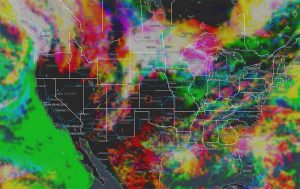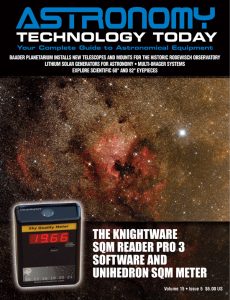An update to its astronomy cloud forecast model has been released by Astrospheric. The new feature is available to Astrospheric subscribers and offers a new cloud forecast model which combines multiple forecast models to generate a state-of-the-art ensemble just for astronomers and astrophotographers.
 The cloud ensemble on Astrospheric combines three powerful forecast models into a single view. This is valuable for astronomers because it provides the ability to see the variance between models. Each model is initiated with a particular view of the atmosphere and runs a different physics model to make predictions.
The cloud ensemble on Astrospheric combines three powerful forecast models into a single view. This is valuable for astronomers because it provides the ability to see the variance between models. Each model is initiated with a particular view of the atmosphere and runs a different physics model to make predictions.
When all models agree, then users can feel more confident in the upcoming atmospheric conditions. When models disagree, then it can represent increased variance. Ensembles are generally used to help remove uncertainty when predicting dangerous weather like snow storms or hurricanes. Astrospheric is now bringing this concept to astronomers seeking clear skies.
The cloud ensemble on Astrospheric combines the following models
– RDPS (Regional Deterministic Prediction System, aka Canadian Model)
– NAM (North American Mesoscale)
– GFS (Global Forecast System)
When the models agree then all colors will be the same and the hour will appear as one solid color. When models differ, then the sub rectangles in each hour will stand out to show the difference. This allows for a quick and easy way to compare what the models are predicting.
Identifying geographic areas where the models agree on clear skies can give added weight to the likelihood that there will actually be clear skies. The cloud layer can be enabled on a mini-cloud map or on the full screen map within Astrospheric.
The value of this new functionality is the advanced understanding of the range of atmospheric conditions the Astrospheric service can provide to help amateur astronomers better plan their nights under the stars.
You can learn more here.
 Finally, And to make it easier for you to get the most extensive news, articles and reviews that are only available in the magazine pages of Astronomy Technology Today, we are offering a 1 year subscription for only $6! Or, for an even better deal, we are offering 2 years for only $9. Click here to get these deals which only will be available for a very limited time. You can also check out a free sample issue here.
Finally, And to make it easier for you to get the most extensive news, articles and reviews that are only available in the magazine pages of Astronomy Technology Today, we are offering a 1 year subscription for only $6! Or, for an even better deal, we are offering 2 years for only $9. Click here to get these deals which only will be available for a very limited time. You can also check out a free sample issue here.

